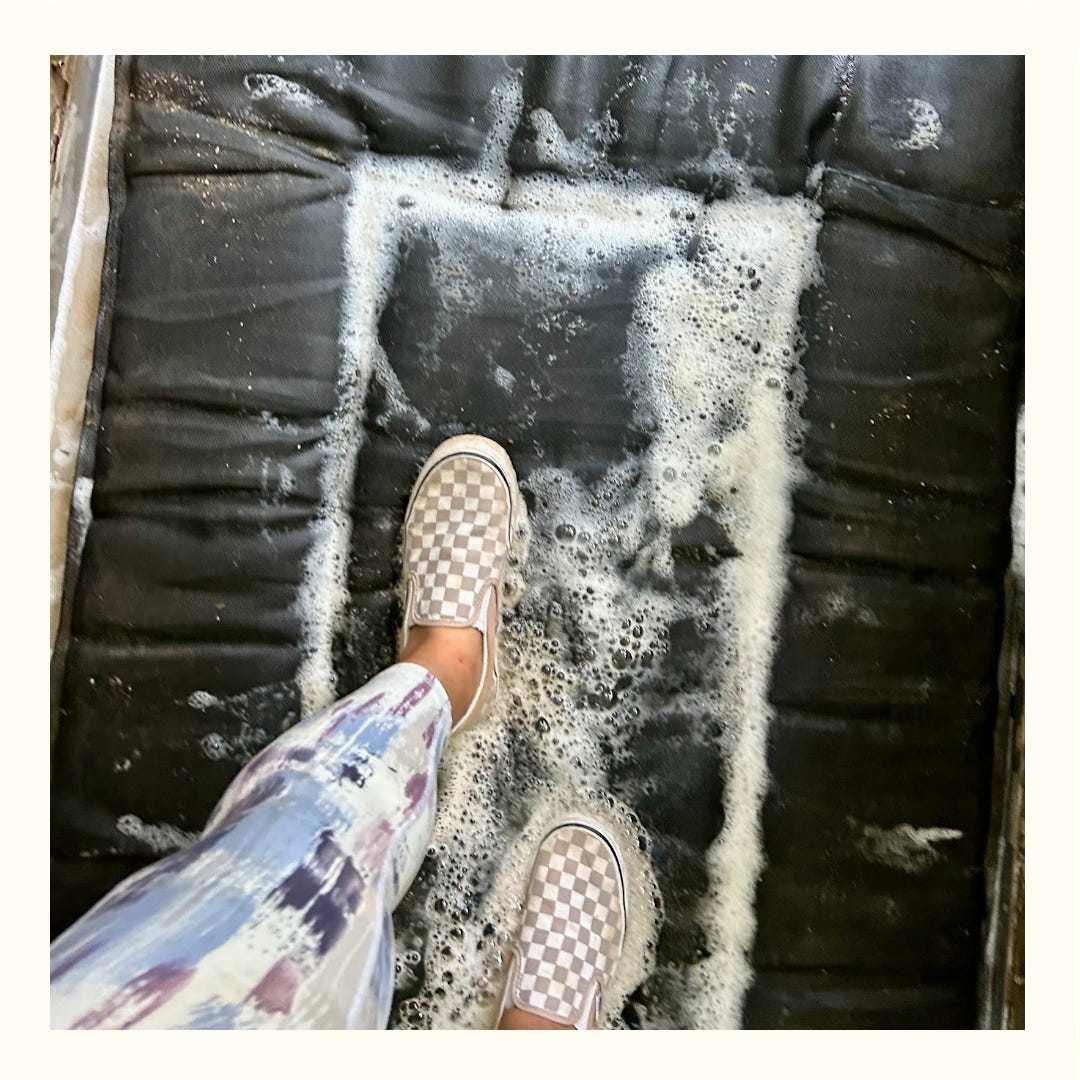Go Here: Mammoth Cave National Park
Ignore the online reviews — this place is literally cool.
Somehow, without any purposeful planning, 2023 became my cave girl summer. With the chance to cross a few distant national parks off our bucket list, my husband and I stuffed two small children and an excessive amount of cast iron cookwear into a truck. We set the GPS for Badlands National Park, along with stops at nearby Jewel Cave and Wind Cave National Parks. Just a few weeks before, we camped at Onondaga Cave State Park in Missouri.
So in 2024, I thought I was done with caves. I wasn’t feeling another drippy, damp underground tour. But when planning a smaller vacation close to home, Mammoth Cave National Park in Kentucky became a top contender. To be honest, I wasn’t jazzed about the idea — partially because I’d been angling for the Southwest, but mostly because Mammoth Cave doesn’t have the same appeal as some of the larger national parks. Park rangers have even joked about this perception after Mammoth Cave was dragged as the country’s third-most disappointing tourist attraction.

However, the powers at be (aka children high on the power of voting on a vacation destination) set me up for a fantastic time. Here are a few trip highlights and recommendations should you venture out to this underground wonder.
Five Fast Facts About Mammoth Cave
Mammoth Cave is the world’s largest cave system, though no one’s sure of its exact size. More than 400 miles have been mapped, and more are continuously discovered because it’s still forming.
While the cave is about 10–15 million years old, the park was established in 1941 in western Kentucky, about 1.5 hours south of Louisville.
Mammoth Cave is a World Heritage Site and Biosphere Reserve, recognized internationally for its historical, scientific, and ecological significance.
Above ground, the park contains 52,830 acres with 70 miles of trail for hiking, biking, and horseback riding, along with river access for water exploration.
The park has three campgrounds, historic cottages, and a motel, making it easy to stay a few days and take in the entire experience.
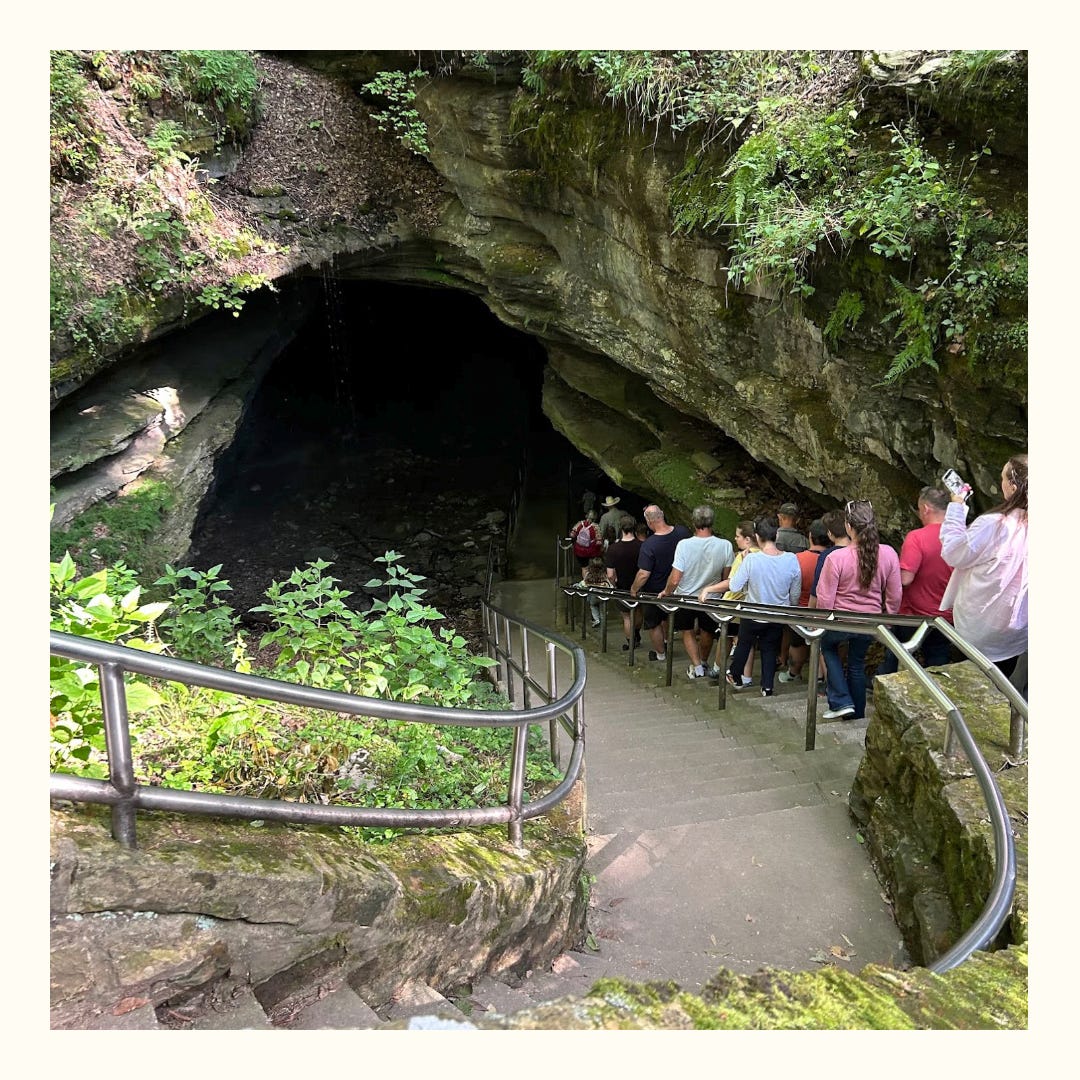
The Main Attraction: Taking a Cave Tour
Our trip to Mammoth Cave happened to sync up with a lovely summer heat wave — not the best for camping, but perfect for spending a few hours in balmy 54° temps. However, we almost missed our shot at cooling off because we didn’t purchase our tour tickets in advance. August is peak season for many national parks, Mammoth Cave included, which sees around 600,000 visitors each year. To accommodate all those people, rangers lead around 20 separate tours each day, with groups as large as 110 visitors.
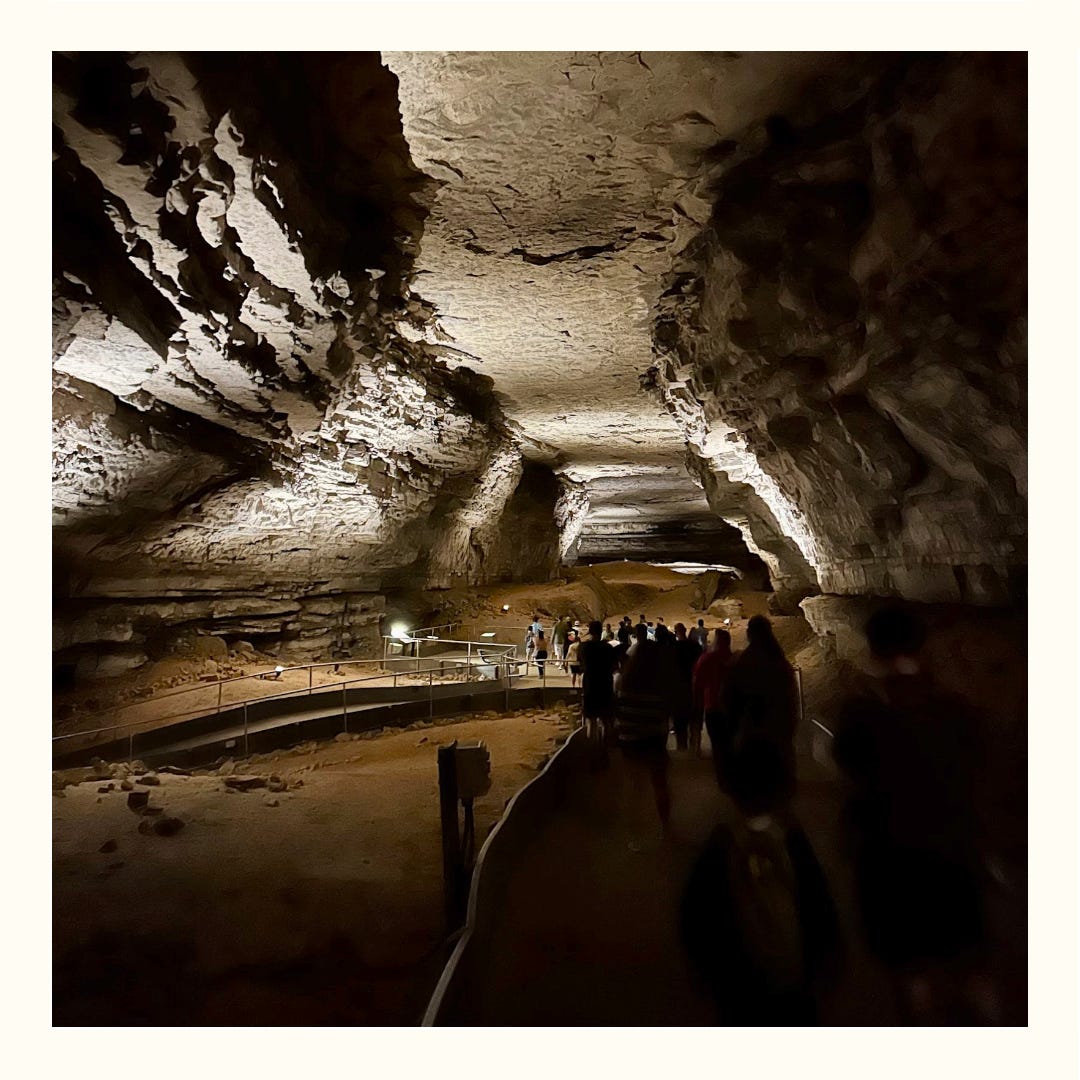
By early morning on our arrival day, nearly all tour tickets were sold out (along with most for the following days). It didn’t help that our choices were somewhat limited because of cave rules; some tours have age or mobility restrictions, or are well over two hours long. With two kids under 6, we snagged the last tickets for the 75-minute Mammoth Passage Tour, an “introductory guided tour” that’s best suited for small children and people with claustrophobia or limited mobility. The tour descended ¾ mile into the cave, where a ranger flipped off the lights briefly to show how dark the passageways are, and gave a detailed history of the cave’s use by native people, saltpeter miners in the early 1800s, and modern explorers.
Unlike many other caves, Mammoth Cave is considered a “dry cave,” meaning it was free of water drops you may experience in other caves. However, you do get your shoes wet at the end in a sanitary scrub rangers jokingly called a “complimentary shoe shine.” That cleaning solution helps curb the spread of white-nose syndrome, a fungal disease that kills bat colonies.
What Else to See and Do at Mammoth Cave NP
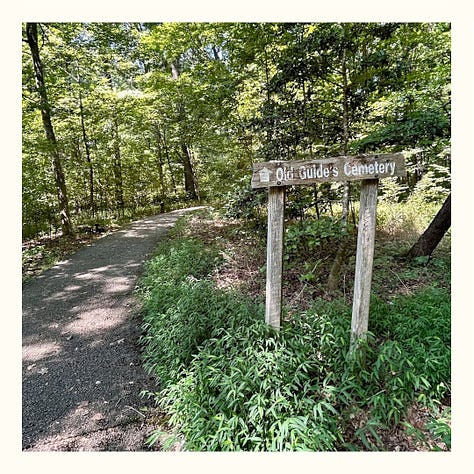
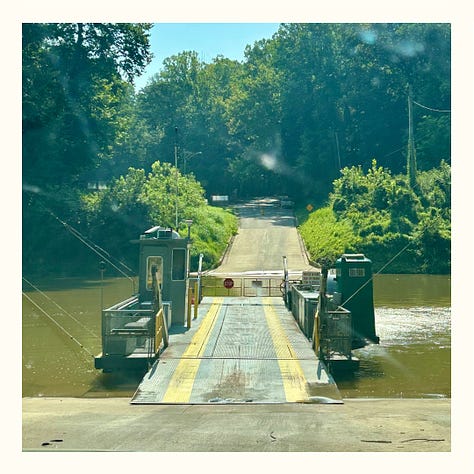

Pay your respects to Stephen Bishop, one of the first Mammoth Cave guides. You’ll find his resting place a short walk from the visitor’s center. Stephen Bishop was an enslaved Black man who worked as a tour guide from the late 1830s through mid-1850s, during which time he explored and mapped new cave passages. He became a renowned guide, leading celebrities of the time such as writer Ralph Waldo Emerson, through Mammoth Cave. Bishop’s cave maps were used for four decades, and he was actually credited for his work despite being enslaved (a rarity of the time). He attained freedom in 1856 and planned to leave caving behind, but died from an illness that same year at age 37. Bishop rests within the Old Guide’s Cemetery, with a headstone that reads “Stephen Bishop, first guide and explorer of the Mammoth Cave.”
Take the junior ranger pledge. NPS’s junior ranger program is a big draw for kids, though anyone can participate. Start by snagging a free booklet from the visitor’s center, which outlines the requirements for getting your badge: participating in a cave tour or ranger program, completing a set of activities within the booklet (such as a scavenger hunt and museum visit), and taking the official junior ranger pledge administered by a park ranger. After swearing in, you’ll get your very own pin-on badge.
Ferry your car across Green River. One entrance to Mammoth Cave National Park requires a water crossing, but you won’t have to caulk and float your car like the Oregon Trail. The Green River Ferry — which has been operational since 1934 — offers a short, free ride across the river for cars, bikes, and hikers. While it typically runs daily, the ferry is paused during low-water conditions and flooding, so call the ferry hotline for operating hours and info to know before you go.
Get a glimpse of huge bullfrogs from the boardwalk at Sloan’s Crossing Pond. Originally constructed as part of the Civilian Conservation Corp (CCC) project in 1939, the boardwalk around Sloan’s Crossing Pond reopened in spring 2024 following major renovations. This nearly half-mile accessible walk puts the marshy water at center stage, letting you view turtles, waterfowl, and other aquatic creatures up close. This was the best part of the entire trip for my frog-obsessed toddler, who enjoyed listening to and spotting some of the largest bullfrogs we’ve ever seen.
All national parks have their positives and downsides, Mammoth Cave included, and while there was less to do and see than some of the larger parks, outdoors enthusiasts will likely find something to enjoy there. Drop a comment below about your favorite national park (or least favorite, because they can’t all be winners).



